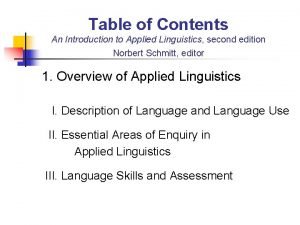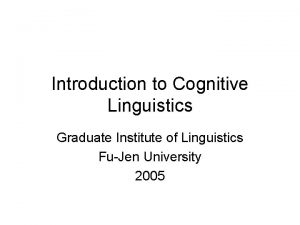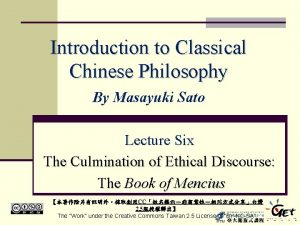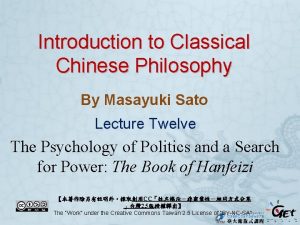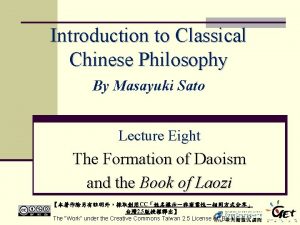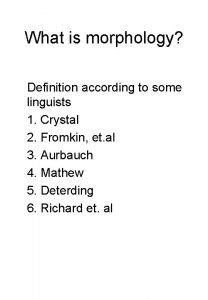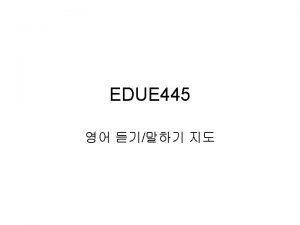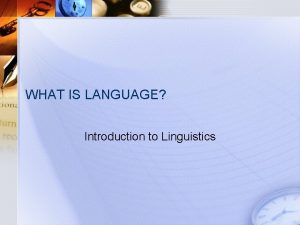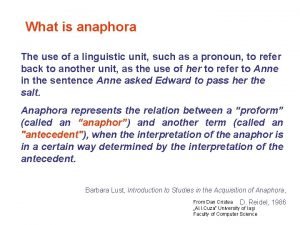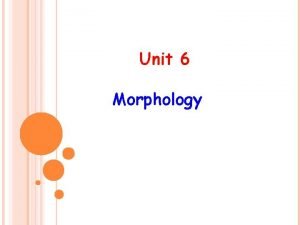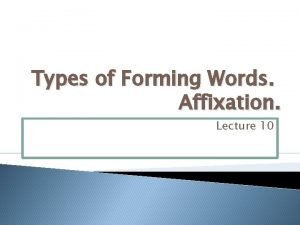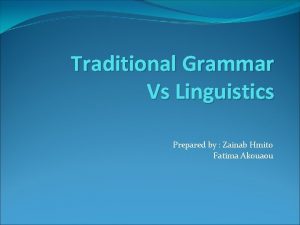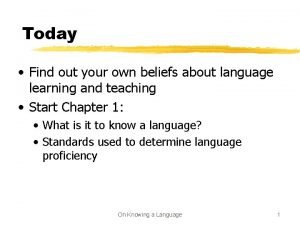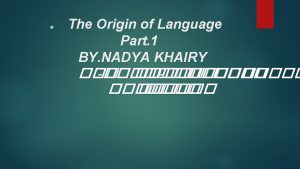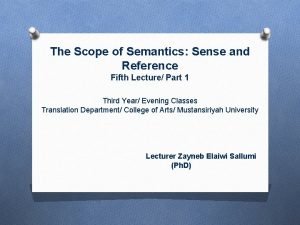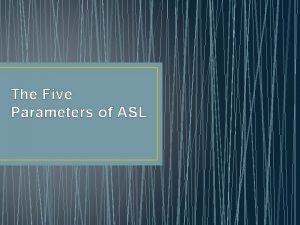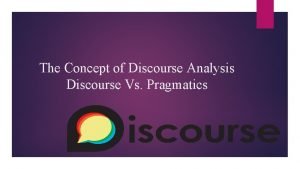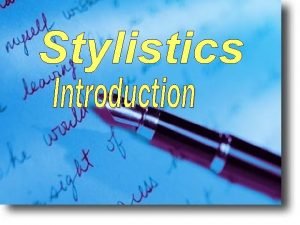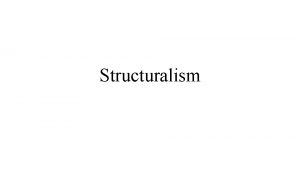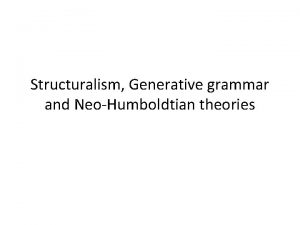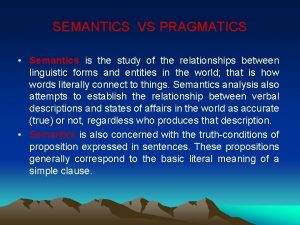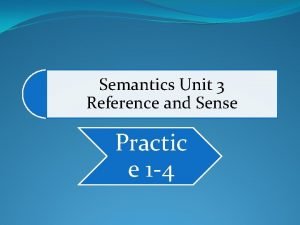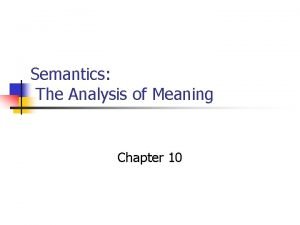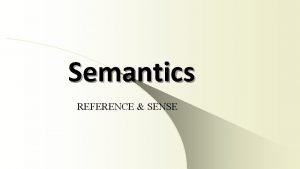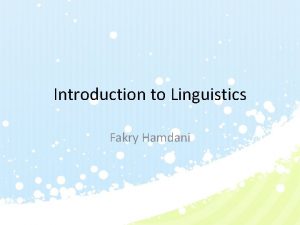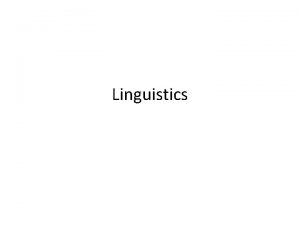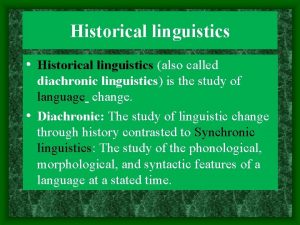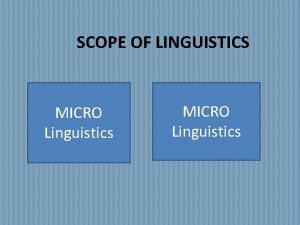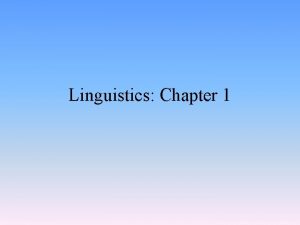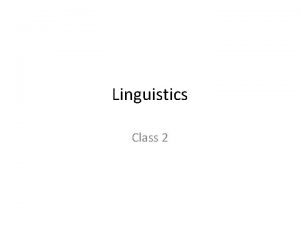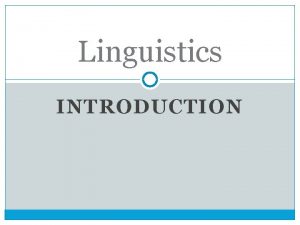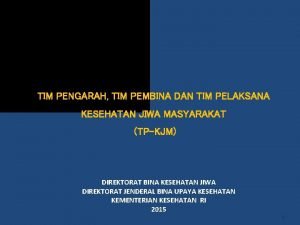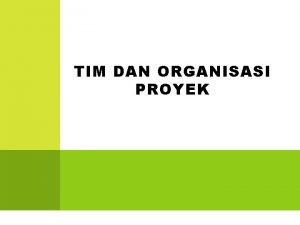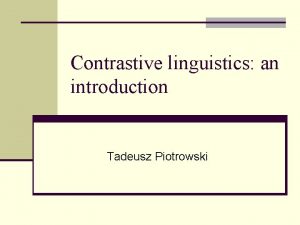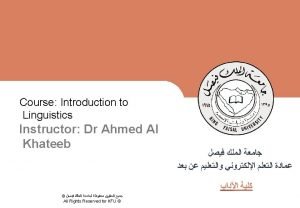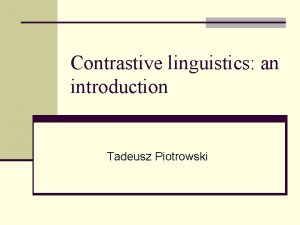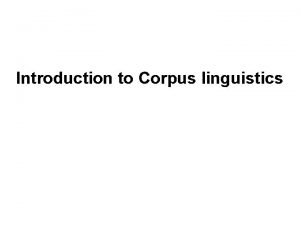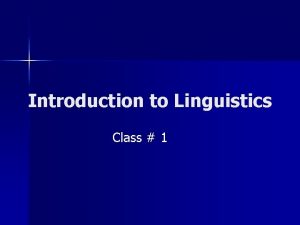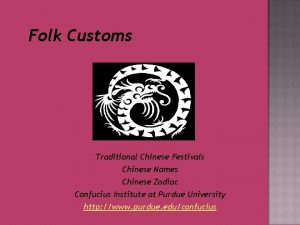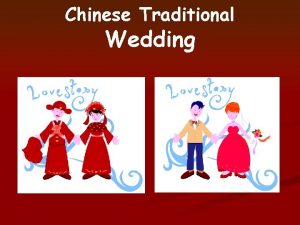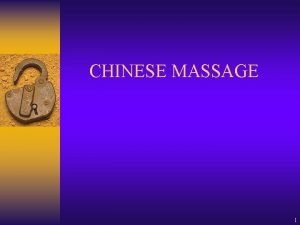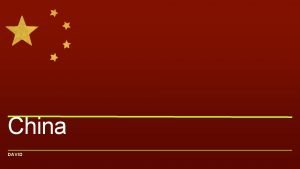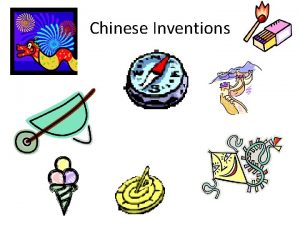Topics in Chinese Linguistics Introduction to Chinese Tim

























![Topic-prominent John, wǒ rènshi. [John, I know. ] Zhè běn shū, wǒ kàn le Topic-prominent John, wǒ rènshi. [John, I know. ] Zhè běn shū, wǒ kàn le](https://slidetodoc.com/presentation_image/77e0e4b13497331f48bfcce77c7815bb/image-26.jpg)










- Slides: 36

Topics in Chinese Linguistics: Introduction to Chinese Tim Xie California State University, Long Beach txie@csulb. edu http: //xietianwei. net

Current status and Future l l l Hanyu is used by 720 million people 70% of the population of China speak Hanyu One fifth of world population speak Hanyu (885 million ) 12. 18. 1973, U. N. General Assembly, 28 th Session resolution: Chinese is one of the working languages of U. N. Mandarin belongs to the Sino-Tibetan language family Mandarin will become the major language in Asia in the 21 century.

Eight Chinese Dialects l l l l Northern (Mandarin) 715 million Jiangsu-Zhejiang (Wu) 85 million Cantonese (Yue) 50 million Hunan (Xiang) 48 million Hakka 37 million Southern Min 28 million Jiangxi (Gan) 24 million Northern Min 13 million (71. 5%) (8. 5%) (4. 8%) (3. 7%) (2. 8%) (2. 4%) (1. 3%) (De. Francis (1984) The Chinese Language p. 58 )


Features and characteristics l Pronunciation l Vocabulary l Grammar

Pronunciation l The number of syllables are limited: 432. There are 1376 syllables if all tonal variation is taken into account. (Liu, 1957) l Vowels are predominant. l There are four tones in Mandarin.

The number of syllables are limited l The total number of syllables is 432 if tones are not taken into consideration. l There are 1376 syllables if all tonal variation is taken into account l Examples: – a, ma, ba, ren, nong, ti, shang (See Xiandai Hanyu Cidan, the syllable table, pp. 7 -12)

Vowels are predominant l Vowels are predominant – lǎo, miáo, lèi l One syllable has at most two consonants – nóng – consonants: [n] and [ng] l There are no consonant – [sp] ‘speak’ – [st] ‘steak’ – [kst] ‘text’ clusters

Four tones in Mandarin mā 妈 má 麻 mǎ 马 mà 骂 mmother hemp horse to scold


There are five tones in Shanghai dialect. There are nine tones in Cantonese dialect.


Translation of “SHI” story The poet Mr. Shi who lived in a stone house liked to eat lions. He swore that he would eat ten lions. He went to the market often to look for lions. At ten o’clock, it happened that ten lions were in the market. At that time, Mr. Shi happened to arrive in the market too. Mr. Shi looked at the ten lions and he shoot the ten lions with arrows. He picked the dead bodies of the ten lions and returned to his stone house. The stone house was wet. He made the servant to clean the room. After the room was cleaned, he began to try to eat these ten lions. Only by the time of eating, he found that these dead bodies of lions were actually stone lions. Try to explain this story.

Vocabulary: most words in modern Chinese are disyllabic 老師 學習 學校 醫院 報紙 lǎoshī xuéxí xuéxiào yīyuàn bàozhǐ teacher to study school hospital newspaper

Most words in ancient Chinese were monosyllabic l衣 l車 l人 l日 l見 l者 l之 yī, clothing, to dress chē, vehicle rén, person rì, sun jiàn, to see zhě, –er zhī of

Script l Non-phonetic: a character has no clue to its pronunciation l Ideographic or pictographic: characters are derived from the pictures l The writing unit is character. Characters can be written vertically or horizontally, from left to write, from right to left, or from top to bottom

A character has no clue to its pronunciation 豳

A character has no clue to its pronunciation 豳 bīn

Characters are derived from pictures

Characters can be written horizontally, from left to write or from right to left

Characters can be written vertically from top to bottom

Guwen Guanzhi – An Anthology of Ancient Chinese

Various styles of writing

Character writing l From left to right l From top to bottom l From outside to inside l Follow stroke order 媽

Grammar l Topic-prominent l No inflection l The word order is important S+V+O l The use of measure words (classifiers) l Left-branching
![Topicprominent John wǒ rènshi John I know Zhè běn shū wǒ kàn le Topic-prominent John, wǒ rènshi. [John, I know. ] Zhè běn shū, wǒ kàn le](https://slidetodoc.com/presentation_image/77e0e4b13497331f48bfcce77c7815bb/image-26.jpg)
Topic-prominent John, wǒ rènshi. [John, I know. ] Zhè běn shū, wǒ kàn le sān biàn. [This book, I read three times. ]

No Inflection l English – work, works, working, worked l Chinese – gōngzuò 作

The word order is important S+V+O S V O Māma ài wǒ. 媽媽愛我。 [Mother loves me. ] Wǒ ài māma. 我愛媽媽。 [I love mother. ]

Large quantity of measure words yī gè péngyou a friend yī zhāng zhǐ a sheet of paper yī bǎ dāo a knife yī tiáo qúnzi a skirt yī jiàn chènshān a shirt



Language in Contact l Influence from Altaic: SVO order l Power to form new words l Load words

load words radar model pound shock humor cola sofa léidá mótèěr bàng xiūkè yōumò kělè shāfā 雷達 模特兒 磅 休克 幽默 可樂 沙發

Power to form new words When new words were introduced to Chinese, most words were translated into Chinese and the new words were coined based on the meaning of each character. telephone 電話 diànhuà television 電視 diànshì computer 電腦 diànnǎo laser 激光 jīguāng railway 鐵路 tiělù electric speech electric vision electric brain activated beam iron road

Words borrowed form other langauges From Miao-Yao 炕 kàng – a brick bed 虎 hǔ – tiger From Altaic 犢 dú – little cow From Proto-Thai 象 xiàng - elephant From India: 葡萄 pútáo - grapes Modern Persian: bāda ‘wine’ Iranian prototype budāwa or bādāwa From India: 茉莉 mòlì – jasmine flower Sanscrit: mallikā

Questions? Enjoy learning Chinese!
 Traditional linguistics and modern linguistics
Traditional linguistics and modern linguistics Linguistics vs applied linguistics
Linguistics vs applied linguistics Chinese tim
Chinese tim Primary 2 malay worksheets
Primary 2 malay worksheets George yule
George yule Introducing phonology answer key
Introducing phonology answer key An introduction to applied linguistics
An introduction to applied linguistics Lexical category
Lexical category Introduction to classical chinese philosophy
Introduction to classical chinese philosophy Introduction to classical chinese philosophy
Introduction to classical chinese philosophy Introduction to classical chinese philosophy
Introduction to classical chinese philosophy Morphology linguistics
Morphology linguistics What is linguistics
What is linguistics Dialectology in linguistics
Dialectology in linguistics What is this language
What is this language Competence vs performance in linguistics
Competence vs performance in linguistics Anaphora linguistics
Anaphora linguistics Linguistic act
Linguistic act Branches of morphology
Branches of morphology Back-formation words
Back-formation words Weakness of traditional grammar
Weakness of traditional grammar Competence vs performance in linguistics
Competence vs performance in linguistics Tldl meaning
Tldl meaning The divine theory of language
The divine theory of language Scope of semantics
Scope of semantics What are the 5 parameters of asl?
What are the 5 parameters of asl? Discourse analysis definition
Discourse analysis definition Graphology in stylistics
Graphology in stylistics Structuralism literature
Structuralism literature From structuralism to transformational generative grammar
From structuralism to transformational generative grammar Bloomfield linguistics
Bloomfield linguistics What is pragmatics in linguistics with examples
What is pragmatics in linguistics with examples Reference referent and sense
Reference referent and sense What is hyponymy
What is hyponymy Associative meaning in semantics examples
Associative meaning in semantics examples Three challenges in doing semantics
Three challenges in doing semantics Importance of language acquisition
Importance of language acquisition






